Globally Diabetes is on the Rise
People with diabetes in 20192
Estimated increase of individuals with diabetes in 20453
1 death every 8 seconds from diabetes –that’s about 28 deaths by the time you have read this page4
Identification and Monitoring Begins with Accurate Testing
What diabetes diagnostic tests can be used for detection and/or monitoring?
To address the growing, critical demand, mid-to high-volume laboratories need an easy-to-use menu of diabetes chemistry assays that is simple to install, operate and integrate with existing testing workflows. Our diabetes menu of assays aid in the diagnosis of diabetes mellitus for the monitoring of long-term blood glucose control in individuals with diabetes mellitus and identifying patients who may be at risk of developing diabetes mellitus (Table 1).*
| Assay | Descriptions | Chemistry Platforms |
| HbA1c (Hemoglobin A1c) Advanced | Automated sample preparation; can be used to determine an individual’s risk or increased risk of diabetes. Can aid in the diagnosis of diabetes mellitus.5 | DxC 700 AU Chemistry Systems |
| HbA1c (Hemoglobin A1c) | Manual sample preparation; can be used on multiple AU Chemistry platforms6 | AU 8-Series and DxC 700 AU Chemistry Systems |
| Access C-Peptide | Able to quantitatively determine C-Peptide levels in human serum, plasma and urine as an aid in the diagnosis and treatment of patients suspected of having diabetes or other insulin secretion disorders. Helpful to distinguish between exogenous and endogenous insulin excess, or to differentiate between Type 1 and 2 diabetes in ambiguous cases.7 | Access 2, DxI 600 and DxI 800 |
| Fructosamine Liquid | Able to monitor the degree of glycemia in diabetics over short-to-intermediate time frames (1-3 weeks). The American Diabetes Association (ADA) has determined that Fructosamine may be a better choice for monitoring when A1C cannot be reliably measured. 8,9,10 | AU 8-Series and DxC 700 AU Chemistry Systems |
| Glucose | Fasting plasma glucose test has been the standard initial diagnostic method for decades.11 Able to determine if blood glucose level is within a healthy range. Can be used to screen for and diagnose diabetes and prediabetes and to monitor for high blood glucose (hyperglycemia) or low blood glucose (hypoglycemia).12 | AU 8-Series and DxC 700 AU Chemistry Systems |
| Urine/CSF Albumin | Albumin is the primary protein excreted by the kidneys in individuals with type 2 diabetes.13 Utilizing urine/ CSF albumin tests can help detect low levels of albumin (microalbumin) and/or rapid rise in urine albumin, which may be a sign of serious kidney disease.14 | AU 8-Series and DxC 700 AU Chemistry Systems |
Table 1: An array of diabetes diagnostic tests are available to physicians. Products listed may not be available in your country or region at this time. Please contact your Beckman Coulter sales representative or distributor for more information.
Type 1 Diabetes, Type 2 Diabetes and Prediabetes
Diabetes is a chronic condition that occurs when a body’s blood glucose, or blood sugar, is too high. There are three main types of diabetes: prediabetes, type 1 and type 2.
Regardless of diabetes type, the excess of blood glucose in an individual can lead to serious health issues. Accurate testing and monitoring are essential in providing physicians with critical information to pursue appropriate treatment to prevent or identify chronic complications.
Prediabetes
occurs when an individual has a higher-than-normal blood sugar amount, yet not high enough to classify as type 2 diabetes. Common risk factors for prediabetes include weight, high blood pressure, and inactivity, in addition to others.15
Type 1 diabetes
Occurs when the immune system attacks and destroys insulin-producing cells in the pancreas, leaving individuals with little to no insulin. Common risk factors for type 1 diabetes include family history, environmental factors and the presence of damaging immune system cells (autoantibodies).15
Type 2 diabetes
Occurs when the way an individual’s body interacts with and uses glucose is compromised. Common risk factors include weight, inactivity, and prediabetes, in addition to others.15
Early Detection is Key
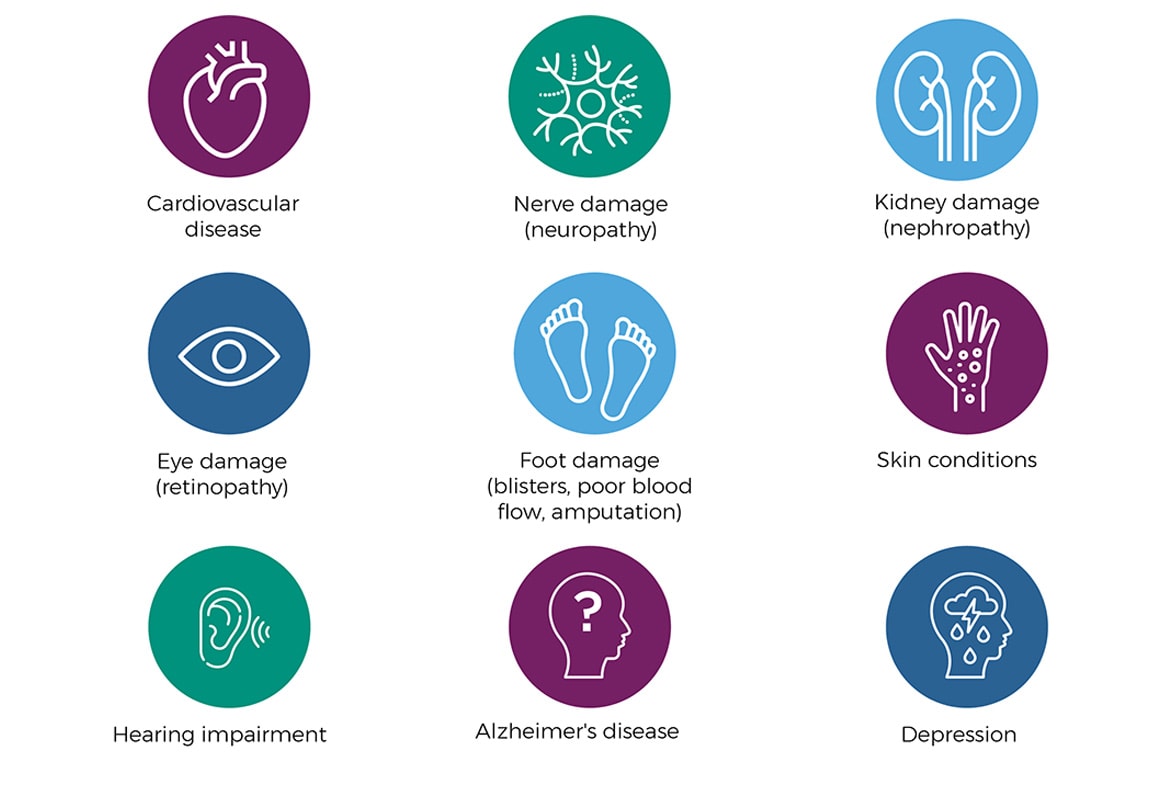
Implications of Diabetes
Diabetes and its complications are a public health problem with harsh impacts on the finances of individuals and their families, health systems, and nations' economies due to the cost of care and insulin.17
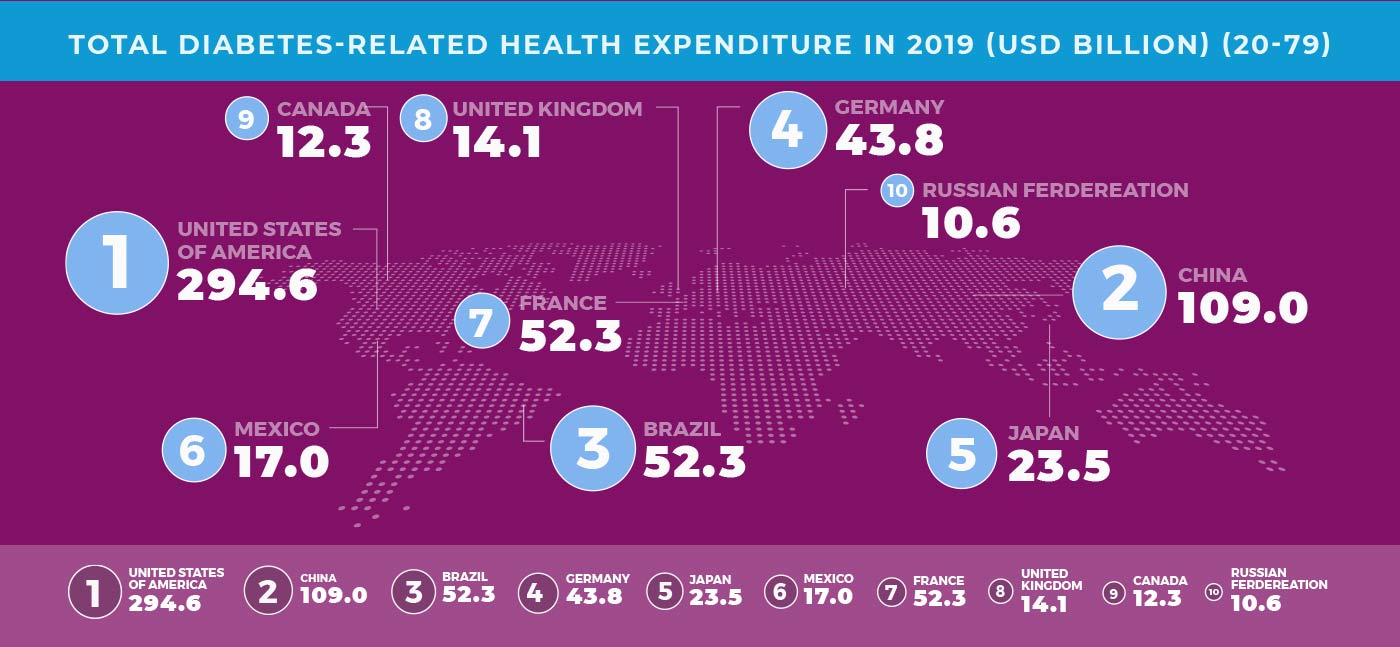
It has been estimated that half of all people with diabetes are unaware of their disease. Since 50 percent of individuals with diabetes are undiagnosed, there is an urgent need to screen, diagnose and provide appropriate care for individuals with diabetes.18
A1c Test
An A1c test, such as the Hemoglobin Assay is among the most common tests used to help diagnose diabetes mellitus, monitor long-term glucose control in individuals with diabetes mellitus and identify patients who may be at risk of developing diabetes mellitus.
Measuring HbA1c every two to three months serves as the accepted standard for glycemic control in the care and treatment of patients with diabetes mellitus. This method is certified by the International Expert Committee (IEC)20 and is National Glycohemoglobin Standardization Program-certified (NGSP)21. It is standardized by the Diabetes Control and Complications Trial (DCCT).22 The World Health Organization and American Diabetes Association recommends using Hemoglobin A1C (HbA1c) method23, 24.

HbA1c Advanced Assay
Specialized assay for improved patient care
HbA1c is the preferred clinical marker for diagnosing prediabetes and ongoing treatment of
diabetes.25,26,27 Receive precise, clinically relevant
results for diagnosing and monitoring diabetes with
the HbA1c Advanced assay. Experience random-access
processing, minimal interferences from common Hb
variants, no extra maintenance and low impact on
routine STAT TAT.
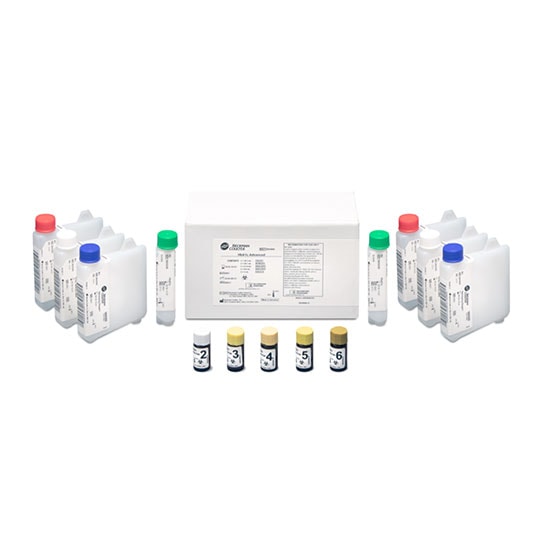
Diabetic Life after COVID-19
Lack of routine testing on diabetes management and prevention are among the current pandemic-related challenges laboratories are facing. Learn how labs can prepare for life after COVID-19.
DxC 700 AU Chemistry Analyzer
Timely results, time-proven technologies
Get the right results at the right time with one system. The DxC AU clinical chemistry analyzer provides fully automated whole blood testing and optimized software to perform whole blood testing in random access mode (RAM).
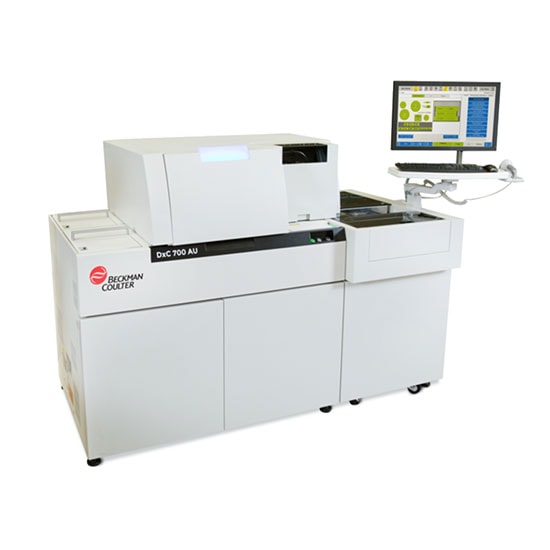
DxA 5000
Experience HbA1c Advanced
on total lab automation
Connect the DxC 700 AU to the DxA 5000 and experience the DxA Intelligent Route Scheduler, which leverages middleware to automatically and continually calculate the most efficient route for HbA1c whole blood samples for the quickest TAT. The DxA 5000 automates every aspect of the workflow from decapping, direct tube sampling, recapping and storage.
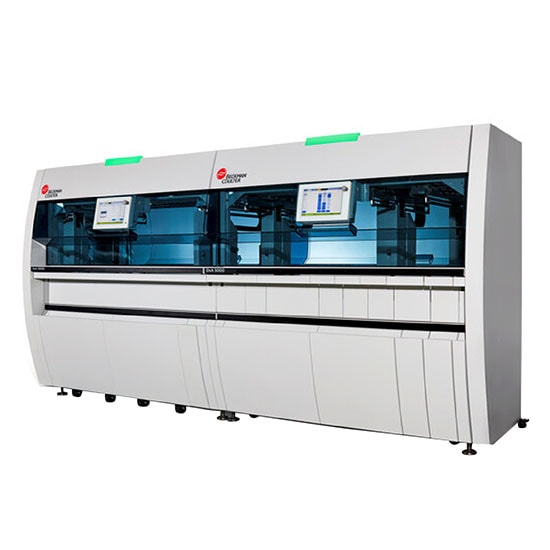
References:
Products listed may not be available in your country or region at this time. Please contact your Beckman Coulter sales representative or distributor for more information
1. Complications | ADA. (2021). American Diabetes Association. https://www.diabetes.org/diabetes/complications
2. IDF Diabetes Atlas 9th edition 2019. (2019). International Diabetes Federation. https://diabetesatlas.org/en/
3. Worldwide toll of diabetes. (2019). International Diabetes Federation. https://diabetesatlas.org/en/sections/worldwide-toll-of-diabetes.html
4. Individual, social and economic impact. (2019). International Diabetes Federation. https://diabetesatlas.org/en/sections/individual-social-and-economic-impact.html#:~:text=Diabetes increases the risk of,one death every eight seconds.
5. HbA1c (Hemoglobin A1c) Instructions for Use (IFU). B00389. Beckman Coulter, Inc. February 2021.
6. HbA1c (Hemoglobin A1c) Advanced Instructions for Use (IFU). B93009. Beckman Coulter, Inc. February 2021.
7. Access C-Peptide Instructions for Use (IFU). C33451. Beckman Coulter, Inc. February 2021.
8. Fructosamine Liquid Instructions for Use (IFU). 1735001. Beckman Coulter, Inc. February 2021.
9. When Should You Order a Serum Fructosamine Level for a Diabetic Patient? – Clinical Correlations. (2007, March 14). Clinical Correlations. https://www.clinicalcorrelations.org/2007/03/14/when-should-you-order-a-serum-fructosamine-level-for-a-diabetic-patient/#:~:text=Fructosamine testing has been available,diabetics control their blood sugar.&text=The American Diabetes Association (ADA,A1C cannot be reliably measured.
10. This product is not available in the United States at this time. Please contact your Beckman Coulter sales representative or distributor for more information.
11. Editorial Staff. (2019, August 8). The Best Tests to Diagnose Diabetes. UC Berkeley School of Public Health: Health and Wellness Alerts. https://www.healthandwellnessalerts.berkeley.edu/topics/diabetes/the-best-tests-to-diagnose-diabetes/#:~:text=Fasting plasma glucose test measures,initial diagnostic method for decades.
12. Editorial Staff. (2019, August 8). The Best Tests to Diagnose Diabetes. UC Berkeley School of Public Health: Health and Wellness Alerts. https://www.healthandwellnessalerts.berkeley.edu/topics/diabetes/the-best-tests-to-diagnose-diabetes/#:~:text=Fasting plasma glucose test measures,initial diagnostic method for decades.
13. Urine Albumin Screening and Monitoring in Type 2 DM. (2009). IHS Division of Diabetes Treatment and Prevention. https://www.ihs.gov/sites/diabetes/themes/responsive2017/display_objects/documents/algorithms/DM_algorithm_Urine_Alb_508c.pdf
14. Urine/CSF Albumin Instructions for Use (IFU). B38858. B46435. Beckman Coulter, Inc. February 2021.
15. Diabetes - Symptoms and causes. (2020, October 30). Mayo Clinic. https://www.mayoclinic.org/diseases-conditions/diabetes/symptoms-causes/syc-20371444
16. Sortso, C., Komkova, A., Sandbæk, A., Griffin, S. J., Emneus, M., Lauritzen, T., & Simmons, R. K. (2018). Effect of screening for type 2 diabetes on healthcare costs: a register-based study among 139,075 individuals diagnosed with diabetes in Denmark between 2001 and 2009. Springermedizin.De. https://www.springermedizin.de/effect-of-screening-for-type-2-diabetes-on-healthcare-costs-a-re/15542004?fulltextView=true
17. Diabetes - Symptoms and causes. (2020b, October 30). Mayo Clinic. https://www.mayoclinic.org/diseases-conditions/diabetes/symptoms-causes/syc-20371444
18. Global report on diabetes. (2016). World Health Organization. https://www.who.int/publications/i/item/9789241565257/
19. IDF Diabetes Atlas, Eighth Edition, 2017.
20. International Expert Committee, 2009. International Expert Committee report on the Role of the A1C assay in the Diagnosis of Diabetes. Diabetes Care, 32(7), pp. 1327-1334.
21. NGSP: HbA1c Assay Interferences. (2020, August). NGSP. http://www.ngsp.org/interf.asp
22. Diabetes Care 2018: 41 (Supplement 1): S13-S27. Classification and Diagnosis of Diabetes: Standards of Medical Care in Diabetes, 2018.
23. The WHO Logo and Emblem. (2021). World Health Organization. https://www.who.int/about/who-we-are/publishing-policies/logo
24. Home | ADA. (2021). American Diabetes Association (ADA). https://www.diabetes.org/
25. American Diabetes Association, 2010. Diagnosis and Classification of Diabetes Mellitus. Diabetes Care, Volume 33, pp. 62-69.
26. International Expert Committee, 2009. International Expert Committee report on the Role of the A1C assay in the Diagnosis of Diabetes. Diabetes Care, 32(7), pp. 1327-1334.
27. WHO, n.d. World Health Organization (WHO). [Online] Available at: http://www.who.int/diabetes/publications/diagnosis_diabetes2011/en/[Accessed 01 May 2017].
 English
English


